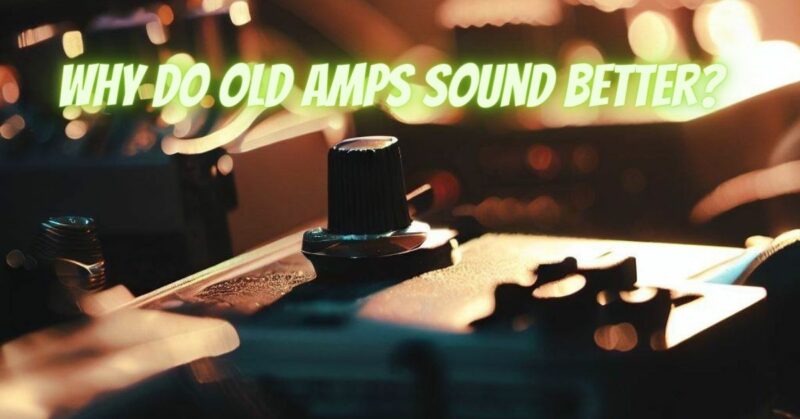The belief that old amps sound better is a sentiment deeply rooted in the world of music and cherished by many guitarists. Vintage amplifiers, typically those produced before the 1980s, have gained a reputation for their unique and desirable tones. In this article, we will explore some of the factors contributing to the perception that old amps sound better, examining the allure of vintage amplifiers and the reasons why they continue to captivate musicians across different genres.
- Vintage Components and Circuitry:
One of the key factors contributing to the appeal of old amps is the use of vintage components and circuit designs. In the past, amps were built with different materials and manufacturing techniques than what is commonly used today. Some vintage amplifiers may feature hand-wired circuits, high-quality capacitors, and resistors that are no longer commonly used in modern amplifiers. These components, along with the specific circuit design, contribute to the unique tonal characteristics of vintage amps.
- Aged Tubes and Components:
As amplifiers age, the electronic components, particularly vacuum tubes, may undergo changes that affect the amp’s tone. Vacuum tubes can develop a more nuanced and harmonically rich sound over time. Some guitarists believe that the gradual aging of tubes leads to a smoother breakup when the amp is pushed to higher volumes, resulting in a more pleasing overdriven tone.
- Speaker Break-In:
Speakers in vintage amps may undergo a “break-in” process over time. As speakers are used and subjected to vibrations, they can become more responsive and achieve a more balanced and pleasing sound. Some guitarists prefer the “broken-in” sound of vintage speakers, which they feel adds to the amp’s overall character.
- Handmade Craftsmanship:
Many vintage amplifiers were handcrafted by skilled technicians and builders. The attention to detail and craftsmanship in vintage amps may contribute to their superior build quality and overall tonal character. Some players believe that the human touch involved in the construction of vintage amps adds to their unique appeal.
- Nostalgia and Vintage Aesthetics:
Vintage amplifiers carry a sense of nostalgia and vintage aesthetics that appeal to the romantic sensibilities of musicians. The classic look and feel of vintage amps, often featuring vintage-style control knobs, unique tolex coverings, and iconic designs, evoke a connection to the golden era of music. This nostalgia and vintage charm contribute to the allure of old amps.
The perception that old amps sound better is a combination of various factors, including vintage components and circuitry, aged tubes and components, speaker break-in, handmade craftsmanship, and the sense of nostalgia associated with vintage aesthetics. While some of these factors may indeed contribute to the unique and desirable tones of vintage amplifiers, it is essential to recognize that not all old amps sound better or have superior tonal qualities compared to modern counterparts.
Ultimately, whether an old amp sounds better is a matter of personal preference and subjective perception. Modern amplifiers have made significant advancements in technology and tonal versatility, providing guitarists with a wide range of options to suit their individual musical needs.
The allure of vintage amplifiers lies in their ability to capture the classic tones that have shaped the history of music. They offer a sense of tradition, authenticity, and a connection to the past that continues to inspire musicians of all generations. Whether it’s the warmth of aged components, the character of handcrafted circuitry, or the vintage aesthetics, the appeal of old amps will forever hold a special place in the hearts of guitarists and music enthusiasts worldwide.


